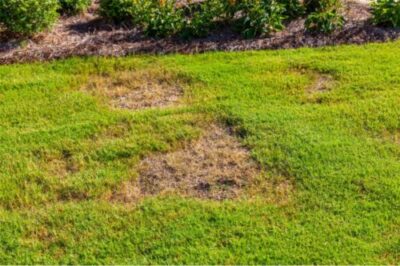One of the most common issues you will find are bare spots. In this guide, we’ll be taking a look at: will grass spread to bare spots on the lawn?
Disclosure: This article may contain affiliate links – that means we may receive a commission if you make a purchase after clicking on these links. This is at no extra cost to you.
When your lawn looks healthy, it can really take your backyard to a whole new level. But there is no denying that keepin a lawn at it’s best is difficult.
It takes a lot of work to get your grass looking good, and it is incredibly easy for this hard work to be reversed. This is why looking after your grass is so important.
But, even if you take good care of your lawn, you will often find that things go wrong with it. The grass is, after all, a living entity, and because of this, it is easy for things to go wrong.
Will Grass Spread To Bare Spots?
Most lawns will develop bare spots at some point throughout their lifetime. When this happens, it can be difficult to know whether you should intervene or let nature do the job.
In short, yes, grass will spread into bare spots on your lawn, and it will usually do this naturally. However, this will take a long time, which is why a lot of people do the job themselves.
But what you should do will depend heavily on the grass that makes up your lawn. Some grass will grow back by itself, but others will require intervention by you, so let’s take a look at what grasses will grow back on their own.
If your lawn is made up of either Bermuda grass or Kentucky bluegrass, then you have a good chance of the grass growing back in the bare spots without intervention.
There is a fair chance that one of these types of grass will make up your lawn, as these are the most common types of grass in the USA. These types of grass are also fairly advanced, which is why there is a chance that they will fill the gaps without you needing to step in.
Both Kentucky bluegrass and Bermuda grass are grasses that have runners. These runners mean that there are organisms of the grass growing both above and below ground, giving it a better chance of spreading throughout your lawn.
These runners will allow the grass to spread across the lawn to the bare spots and fill them in. So, if you have this grass, there is a chance that your lawn will repair itself.
Does Grass Spread By Itself?
As we have said, yes, grass does spread by itself. All grass will do this, but some types of grass are more successful than others.
Like we mentioned earlier, some types of grass that are best for spreading themselves are Kentucky bluegrass and Bermuda grass. But, all grass will have this property, so let’s take a look at how grass spreads itself.
Grass can spread vegetatively because it contains rhizomes. These rhizomes spread beneath the surface of the soil, allowing the grass to spread itself out.
Once these rhizomes have spread, the individual pieces of grass will begin growing upwards and out of the soil. When the grass sprouts, it will then begin producing seeds from its own inflorescence.
This means that while the grass is spreading out beneath the ground and spreading in that manner, it will also begin producing seeds that will spread above the ground.
Therefore, allowing the grass to spread across a patch of land by itself. However, it is worth noting that this is a slow process, so it will take a while for you to see the results if you allow the grass to spread by itself.
What Is The Best Way To Grow Grass In Bare Spots?
If your lawn has bare patches, then you might be looking for the best way to grow grass in these spots. You could just wait for your lawn to fix the bare spots themselves, but this is a long and slow process.
If you want a quicker fix, then you should do the job yourself using overseeding.
To begin with, you should rake the area where there is a bare spot. This will pick up any leaves or debris that could be inhibiting the growth of the grass.
You should then take some fresh grass seeds and spread them over the turf by hand. Following that, add about half an inch of topsoil onto the grass seeds.
But, that isn’t the end of the process. You should then take your rake to try to improve the soil-to-seed contact. The best way to do this is by raking slowly in the area of the bare spot.
This will ensure that the seeds are completely planted in the soil. You should then water the seeds every morning and evening until they begin to germinate and grow, filling the bare spots in the process.


